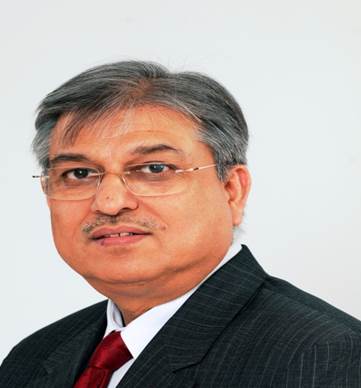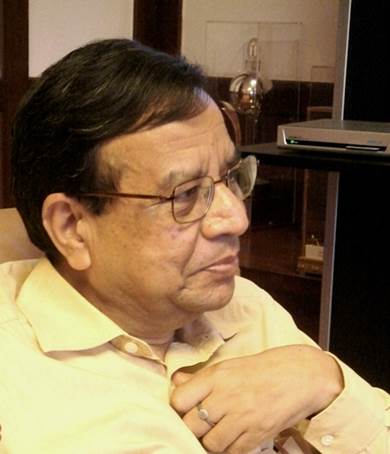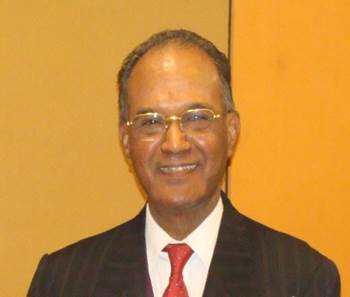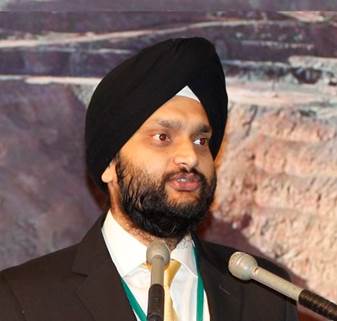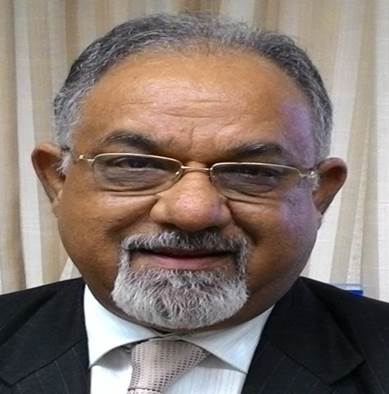INTRODUCTION

World over energy demand is bound to increase with the onset of economy coming out of the woods albeit gradually. Among the top three sources of energy (Oil, Natural Gas and Coal), the share of natural gas in the World Energy basket has been growing consistently over the past three decades and is now close to 24%, in 2013 as compared to 20% in 1980. In order to combat the increasing effect of environmental effects of fossil fuels and contain the climate change, it is imperative that the supply of gas in various forms should keep pace with the growing market demand.
Gas scenario is undergoing dynamic changes as the supply side is set to increase with availability of gas and LNG from a large number of sources both conventional and unconventional. With shale boom a host of liquefaction terminals are on the anvil in the US that would make it an exporter from 2016-17 with net exports expected to reach 10.6 Bcf/d by 2035. The arrival of US LNG exports will have a profound impact on global LNG markets, contributing to a shake-up in the structure of LNG supplies. Besides this, Australia is set to emerge as a major supply source of LNG with other projects being set up in the African countries and Canada. Developments in the tight & shale gas particularly in China besides other countries, new trans-national pipelines being setup in various countries would result in the availability of gas near the demand centers and is likely to alter the world LNG trade routes.
Demand for primary energy demand in South Asian countries and India in particular is expected to increase in future with increasing industrialisation, urbanisation and change on the macro-economic front. Coal will continue to be the major source of primary energy in the country despite its environmental concerns as a fuel. With advances in technology and increased thrust by Governments, various forms of renewable energy are likely to become increasingly competitive and share of these fuels in the energy mix is expected to increase in the future as well. Indian economy has seen a slow economic growth in the year gone by and is estimated to grow at 5.6% in the current financial year. Various estimates point to GDP to be around 7.5-8.0% in India in the next few years and with that the share of gas in the energy mix is slated to be in the range of 22-25% by the year 2025.
In view of the emerging supply sources, it is forecast that globally net inter-regional imbalances are expected to more than double growing at 4% p.a driven by Asia Pacific where imports are likely to triple by 2035. Share of total gas consumption that is imported in the world is projected to grow steadily from 31% in 2012 to 34% in 2035. With the integration of global gas market, LNG share of traded gas rises from 32% in 2012 to above 46% by 2035, while its share of consumption expands from 10% to 15% even though pipeline remains the primary mode of gas trade.
Despite seen in the domestic production of oil and gas, India is far from being self-sufficient in this sector. As per the current estimates, availability of domestic gas in India in the near future will be quite inadequate to meet the emerging demand and hence the Demand - Supply gap has to be met by LNG imports in the future. Same holds true for other South Asian countries.
On account of the scenario as above, India & other nations in South Asia are taking steps to enhance availability of gas through expansion of existing LNG facilities and setting up new LNG import regas terminals including FSRUs. Evacuation of gas at the import points or at the proposed transnational pipelines like TAPI to the consumption zones through a maze of pipeline network in a synchronised manner is the need of the hour. Present plans envisage that each km of gas transmission pipeline in India will cater to an area of about 104 km. However, corresponding figure for countries such as U.S., U.K. and Germany is less than 20 km with neighbouring countries like Pakistan and Bangladesh are far ahead at present with corresponding figures of 76 km and 53 Km.
To address various concerns and the shape of things that are likely to emerge in the next few years. Diligentia Services is organising the conference with experts drawn from various fields to deliberate upon the key issues and developments and review the road map for the growth of gas industry in the South Asian markets with India as the epicentre. The event will promote discussions with a thrust on Global supply chain with impact of emerging new sources on the supply side, various pricing linkages, possible change in the contract terms, spot trading: likely scenario, India as a trading hub:- possibilities & challenges, FSRU as viable alternative, technical advances in LNG regas terminals, small scale LNG, gas storage, onshore & sub-sea pipelines, shipping challenges, LNG by road, regulatory framework, financial risk mitigation various paradigms, consumer perceptions: a reality check and need for reforms in various major consuming sectors.
supporting partner
Petroleum Federation of India

The Petroleum Federation of India is an apex Society of entities in the hydrocarbon sector to promote the interests of members through a self regulatory environment with national and consumer interest in sight.It acts as an oil industry interface with Government, regulatory authorities, public and representative bodies of traders and helps in resolution of issues and evolution of policies and regulations. It represents the industry on Government bodies, committees and task forces.
PetroFed organizes seminars, conferences, workshops, training programmes, lectures and brings out a quarterly journal and technical publications. It functions through committees from member organizations and other experts, covering all aspects of oil and gas industry which submit recommendations on an ongoing basis.
PetroFed has instituted 14 oil & gas industry awards in 12 categories. The awards are open to all oil & gas companies operating in India.
Visit PetroFed website www.petrofed.org
People 4Planet

People4Planet is a social enterprise committed towards providing an open innovation platform for like-minded, people, institutions and organizations willing to connect, share and collaborate in resolving problems and challenges faced by the energy sector and to help minimize the impact of Global Warming and Climate change on the lives of Individuals and communities all over the world.
Global Natural Gas Ventures Pte Ltd The Enterprise
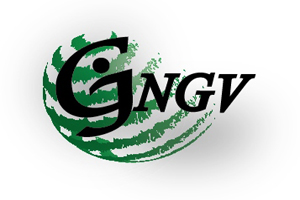
The Global NGV has been set up in India to provide the requisite platform for Global entities to venture into possible business opportunities in the Indian Gas and renewable energy field considering the tremendous energy gap that exists between the demand and supply.
The Global NGV facilitates all such efforts / business objectives by providing the requisite support in the downstream activities in India in terms of Specific support in appraising, assessing marketing opportunities / demand centers and formalizing such requirements into bankable short term / long term contracts and agreements.
The mode of such facilitation can be built through varieties of instruments like a Retainer-ship, regular specific contract / agreement, partnerships. JVs or collaborations as may be required by the entities across the world seeking to market their products (natural gas / LNG and other renewable energy options ) in India.
The GNGV has marshalled its resources to be able to provide such services through experienced and well versed personnel with in India and shall be able to resource the HR requirements with in the requisite legal framework .
![]()
Sponsorship
Petronet LNG Limited (Premium Sponsor)
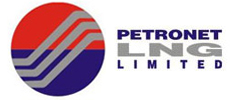
Petronet LNG Limited, one of the fastest growing world-class companies in the Indian energy sector, has set up the country's first LNG receiving and regasification terminal at Dahej, Gujarat, and another terminal at Kochi, Kerala. While the Dahej terminal has a nominal capacity of 10 MMTPA [equivalent to 40 MMSCMD of natural gas], the Kochi terminal has a capacity of 5 MMTPA [equivalent to 20 MMSCMD of natural gas]. The company is in the process to build a third terminal at Gangavaram, Andhra Pradesh.
Petronet LNG is at the forefront of India's all-out national drive to ensure the country's energy security in the years to come.
GAIL (Lead Sponsor)

GAIL (India) Ltd was incorporated in August 1984 as a Central Public Sector Undertaking (PSU) under the Ministry of Petroleum & Natural Gas (MoP&NG). The company was initially given the responsibility of construction, operation & maintenance of the Hazira Vijaypur Jagdishpur (HVJ) pipeline Project. It was one of the largest cross-country natural gas pipeline projects in the world. Originally this 1800 Km long pipeline was built at a cost of Rs 1700 Crores and it laid the foundation for development of market for natural Gas in India.
After having started as a natural gas transmission company during the late eighties, has grown organically by building large network of Natural Gas Pipelines covering more than 10900 Km with a capacity of around 200 MMSCMD; two LPG Pipelines covering 2040 Km with a capacity of 3.8 MMTPA of LPG; seven gas processing plants for production of LPG and other Liquid Hydrocarbons, with a production capacity of 1.4 MMTPA; and a gas based integrated Petrochemical plant of 410,000 TPA polymer capacity which is further being expanded to a capacity of 900,000 TPA.
It is a pioneer in City Gas Distribution (CGD) business in India, with Indraprastha Gas Limited (IGL) in Delhi and Mahanagar Gas Limited (MGL) in Mumbai being its biggest success stories. Besides IGL and MGL, GAIL has set up several JVs for CGD to supply gas to households, transport sector & commercial consumers in various cities including Hyderabad, Agartala, Kanpur, Indore, Vadodara, Lucknow, Agra and Pune. In 2008, GAIL incorporated a wholly owned subsidiary, GAIL Gas Ltd (GGL) to exclusively focus on city gas distribution business. GGL has been authorized for implementation of CGD projects in four cities namely Kota, Dewas, Sonepat & Meerut in the 1st round of bidding by Petroleum & Natural Gas Regulatory Board (PNGRB).
EIL(Silver Sponsor)

Engineers India Ltd (EIL) is one of the leading design and engineering organizations in South Asia. Established in 1965, EIL provides engineering consultancy and EPC services principally focused on the oil & gas and petrochemical industries. The Company has also diversified into sectors like infrastructure, water and waste management, solar & nuclear power and fertilizers to leverage its strong technical competencies and track record.
Today, EIL is a Total Solutions engineering consultancy company providing design, engineering, procurement, construction and integrated project management services from Concept to Commissioning with highest quality and safety standards. EIL QMS, OHSMS and EMS are certified to ISO 9001, OHSAS 18001 and ISO 14001 respectively. It also provides specialist services such as heat and mass transfer equipment design, environmental engineering, specialist materials and maintenance and plant operations and safety services.
![]()



 World over energy demand is bound to increase with the onset of economy coming out of the woods albeit gradually. Among the top three sources of energy (Oil, Natural Gas and Coal), the share of natural gas in the World Energy basket has been growing consistently over the past three decades and is now close to 24%, in 2013 as compared to 20% in 1980. In order to combat the increasing effect of environmental effects of fossil fuels and contain the climate change, it is imperative that the supply of gas in various forms should keep pace with the growing market demand.
Gas scenario is undergoing dynamic changes as the supply side is set to increase with availability of gas and LNG from a large number of sources both conventional and unconventional. With shale boom a host of liquefaction terminals are on the anvil in the US that would make it an exporter from 2016-17 with net exports expected to reach 10.6 Bcf/d by 2035. The arrival of US LNG exports will have a profound impact on global LNG markets, contributing to a shake-up in the structure of LNG supplies. Besides this, Australia is set to emerge as a major supply source of LNG with other projects being set up in the African countries and Canada. Developments in the tight & shale gas particularly in China besides other countries, new trans-national pipelines being setup in various countries would result in the availability of gas near the demand centers and is likely to alter the world LNG trade routes.
Demand for primary energy demand in South Asian countries and India in particular is expected to increase in future with increasing industrialisation, urbanisation and change on the macro-economic front. Coal will continue to be the major source of primary energy in the country despite its environmental concerns as a fuel. With advances in technology and increased thrust by Governments, various forms of renewable energy are likely to become increasingly competitive and share of these fuels in the energy mix is expected to increase in the future as well. Indian economy has seen a slow economic growth in the year gone by and is estimated to grow at 5.6% in the current financial year. Various estimates point to GDP to be around 7.5-8.0% in India in the next few years and with that the share of gas in the energy mix is slated to be in the range of 22-25% by the year 2025.
In view of the emerging supply sources, it is forecast that globally net inter-regional imbalances are expected to more than double growing at 4% p.a driven by Asia Pacific where imports are likely to triple by 2035. Share of total gas consumption that is imported in the world is projected to grow steadily from 31% in 2012 to 34% in 2035. With the integration of global gas market, LNG share of traded gas rises from 32% in 2012 to above 46% by 2035, while its share of consumption expands from 10% to 15% even though pipeline remains the primary mode of gas trade.
Despite seen in the domestic production of oil and gas, India is far from being self-sufficient in this sector. As per the current estimates, availability of domestic gas in India in the near future will be quite inadequate to meet the emerging demand and hence the Demand - Supply gap has to be met by LNG imports in the future. Same holds true for other South Asian countries.
On account of the scenario as above, India & other nations in South Asia are taking steps to enhance availability of gas through expansion of existing LNG facilities and setting up new LNG import regas terminals including FSRUs. Evacuation of gas at the import points or at the proposed transnational pipelines like TAPI to the consumption zones through a maze of pipeline network in a synchronised manner is the need of the hour. Present plans envisage that each km of gas transmission pipeline in India will cater to an area of about 104 km. However, corresponding figure for countries such as U.S., U.K. and Germany is less than 20 km with neighbouring countries like Pakistan and Bangladesh are far ahead at present with corresponding figures of 76 km and 53 Km.
To address various concerns and the shape of things that are likely to emerge in the next few years. Diligentia Services is organising the conference with experts drawn from various fields to deliberate upon the key issues and developments and review the road map for the growth of gas industry in the South Asian markets with India as the epicentre. The event will promote discussions with a thrust on Global supply chain with impact of emerging new sources on the supply side, various pricing linkages, possible change in the contract terms, spot trading: likely scenario, India as a trading hub:- possibilities & challenges, FSRU as viable alternative, technical advances in LNG regas terminals, small scale LNG, gas storage, onshore & sub-sea pipelines, shipping challenges, LNG by road, regulatory framework, financial risk mitigation various paradigms, consumer perceptions: a reality check and need for reforms in various major consuming sectors.
World over energy demand is bound to increase with the onset of economy coming out of the woods albeit gradually. Among the top three sources of energy (Oil, Natural Gas and Coal), the share of natural gas in the World Energy basket has been growing consistently over the past three decades and is now close to 24%, in 2013 as compared to 20% in 1980. In order to combat the increasing effect of environmental effects of fossil fuels and contain the climate change, it is imperative that the supply of gas in various forms should keep pace with the growing market demand.
Gas scenario is undergoing dynamic changes as the supply side is set to increase with availability of gas and LNG from a large number of sources both conventional and unconventional. With shale boom a host of liquefaction terminals are on the anvil in the US that would make it an exporter from 2016-17 with net exports expected to reach 10.6 Bcf/d by 2035. The arrival of US LNG exports will have a profound impact on global LNG markets, contributing to a shake-up in the structure of LNG supplies. Besides this, Australia is set to emerge as a major supply source of LNG with other projects being set up in the African countries and Canada. Developments in the tight & shale gas particularly in China besides other countries, new trans-national pipelines being setup in various countries would result in the availability of gas near the demand centers and is likely to alter the world LNG trade routes.
Demand for primary energy demand in South Asian countries and India in particular is expected to increase in future with increasing industrialisation, urbanisation and change on the macro-economic front. Coal will continue to be the major source of primary energy in the country despite its environmental concerns as a fuel. With advances in technology and increased thrust by Governments, various forms of renewable energy are likely to become increasingly competitive and share of these fuels in the energy mix is expected to increase in the future as well. Indian economy has seen a slow economic growth in the year gone by and is estimated to grow at 5.6% in the current financial year. Various estimates point to GDP to be around 7.5-8.0% in India in the next few years and with that the share of gas in the energy mix is slated to be in the range of 22-25% by the year 2025.
In view of the emerging supply sources, it is forecast that globally net inter-regional imbalances are expected to more than double growing at 4% p.a driven by Asia Pacific where imports are likely to triple by 2035. Share of total gas consumption that is imported in the world is projected to grow steadily from 31% in 2012 to 34% in 2035. With the integration of global gas market, LNG share of traded gas rises from 32% in 2012 to above 46% by 2035, while its share of consumption expands from 10% to 15% even though pipeline remains the primary mode of gas trade.
Despite seen in the domestic production of oil and gas, India is far from being self-sufficient in this sector. As per the current estimates, availability of domestic gas in India in the near future will be quite inadequate to meet the emerging demand and hence the Demand - Supply gap has to be met by LNG imports in the future. Same holds true for other South Asian countries.
On account of the scenario as above, India & other nations in South Asia are taking steps to enhance availability of gas through expansion of existing LNG facilities and setting up new LNG import regas terminals including FSRUs. Evacuation of gas at the import points or at the proposed transnational pipelines like TAPI to the consumption zones through a maze of pipeline network in a synchronised manner is the need of the hour. Present plans envisage that each km of gas transmission pipeline in India will cater to an area of about 104 km. However, corresponding figure for countries such as U.S., U.K. and Germany is less than 20 km with neighbouring countries like Pakistan and Bangladesh are far ahead at present with corresponding figures of 76 km and 53 Km.
To address various concerns and the shape of things that are likely to emerge in the next few years. Diligentia Services is organising the conference with experts drawn from various fields to deliberate upon the key issues and developments and review the road map for the growth of gas industry in the South Asian markets with India as the epicentre. The event will promote discussions with a thrust on Global supply chain with impact of emerging new sources on the supply side, various pricing linkages, possible change in the contract terms, spot trading: likely scenario, India as a trading hub:- possibilities & challenges, FSRU as viable alternative, technical advances in LNG regas terminals, small scale LNG, gas storage, onshore & sub-sea pipelines, shipping challenges, LNG by road, regulatory framework, financial risk mitigation various paradigms, consumer perceptions: a reality check and need for reforms in various major consuming sectors.
 The Petroleum Federation of India is an apex Society of entities in the hydrocarbon sector to promote the interests of members through a self regulatory environment with national and consumer interest in sight.It acts as an oil industry interface with Government, regulatory authorities, public and representative bodies of traders and helps in resolution of issues and evolution of policies and regulations. It represents the industry on Government bodies, committees and task forces.
PetroFed organizes seminars, conferences, workshops, training programmes, lectures and brings out a quarterly journal and technical publications. It functions through committees from member organizations and other experts, covering all aspects of oil and gas industry which submit recommendations on an ongoing basis.
PetroFed has instituted 14 oil & gas industry awards in 12 categories. The awards are open to all oil & gas companies operating in India.
Visit PetroFed website www.petrofed.org
The Petroleum Federation of India is an apex Society of entities in the hydrocarbon sector to promote the interests of members through a self regulatory environment with national and consumer interest in sight.It acts as an oil industry interface with Government, regulatory authorities, public and representative bodies of traders and helps in resolution of issues and evolution of policies and regulations. It represents the industry on Government bodies, committees and task forces.
PetroFed organizes seminars, conferences, workshops, training programmes, lectures and brings out a quarterly journal and technical publications. It functions through committees from member organizations and other experts, covering all aspects of oil and gas industry which submit recommendations on an ongoing basis.
PetroFed has instituted 14 oil & gas industry awards in 12 categories. The awards are open to all oil & gas companies operating in India.
Visit PetroFed website www.petrofed.org
 People4Planet is a social enterprise committed towards providing an open innovation platform for like-minded, people, institutions and organizations willing to connect, share and collaborate in resolving problems and challenges faced by the energy sector and to help minimize the impact of Global Warming and Climate change on the lives of Individuals and communities all over the world.
People4Planet is a social enterprise committed towards providing an open innovation platform for like-minded, people, institutions and organizations willing to connect, share and collaborate in resolving problems and challenges faced by the energy sector and to help minimize the impact of Global Warming and Climate change on the lives of Individuals and communities all over the world.
 The Global NGV has been set up in India to provide the requisite platform for Global entities to venture into possible business opportunities in the Indian Gas and renewable energy field considering the tremendous energy gap that exists between the demand and supply.
The Global NGV facilitates all such efforts / business objectives by providing the requisite support in the downstream activities in India in terms of Specific support in appraising, assessing marketing opportunities / demand centers and formalizing such requirements into bankable short term / long term contracts and agreements.
The mode of such facilitation can be built through varieties of instruments like a Retainer-ship, regular specific contract / agreement, partnerships. JVs or collaborations as may be required by the entities across the world seeking to market their products (natural gas / LNG and other renewable energy options ) in India.
The GNGV has marshalled its resources to be able to provide such services through experienced and well versed personnel with in India and shall be able to resource the HR requirements with in the requisite legal framework .
The Global NGV has been set up in India to provide the requisite platform for Global entities to venture into possible business opportunities in the Indian Gas and renewable energy field considering the tremendous energy gap that exists between the demand and supply.
The Global NGV facilitates all such efforts / business objectives by providing the requisite support in the downstream activities in India in terms of Specific support in appraising, assessing marketing opportunities / demand centers and formalizing such requirements into bankable short term / long term contracts and agreements.
The mode of such facilitation can be built through varieties of instruments like a Retainer-ship, regular specific contract / agreement, partnerships. JVs or collaborations as may be required by the entities across the world seeking to market their products (natural gas / LNG and other renewable energy options ) in India.
The GNGV has marshalled its resources to be able to provide such services through experienced and well versed personnel with in India and shall be able to resource the HR requirements with in the requisite legal framework .
 Petronet LNG Limited, one of the fastest growing world-class companies in the Indian energy sector, has set up the country's first LNG receiving and regasification terminal at Dahej, Gujarat, and another terminal at Kochi, Kerala. While the Dahej terminal has a nominal capacity of 10 MMTPA [equivalent to 40 MMSCMD of natural gas], the Kochi terminal has a capacity of 5 MMTPA [equivalent to 20 MMSCMD of natural gas]. The company is in the process to build a third terminal at Gangavaram, Andhra Pradesh.
Petronet LNG is at the forefront of India's all-out national drive to ensure the country's energy security in the years to come.
Petronet LNG Limited, one of the fastest growing world-class companies in the Indian energy sector, has set up the country's first LNG receiving and regasification terminal at Dahej, Gujarat, and another terminal at Kochi, Kerala. While the Dahej terminal has a nominal capacity of 10 MMTPA [equivalent to 40 MMSCMD of natural gas], the Kochi terminal has a capacity of 5 MMTPA [equivalent to 20 MMSCMD of natural gas]. The company is in the process to build a third terminal at Gangavaram, Andhra Pradesh.
Petronet LNG is at the forefront of India's all-out national drive to ensure the country's energy security in the years to come.
 GAIL (India) Ltd was incorporated in August 1984 as a Central Public Sector Undertaking (PSU) under the Ministry of Petroleum & Natural Gas (MoP&NG). The company was initially given the responsibility of construction, operation & maintenance of the Hazira Vijaypur Jagdishpur (HVJ) pipeline Project. It was one of the largest cross-country natural gas pipeline projects in the world. Originally this 1800 Km long pipeline was built at a cost of Rs 1700 Crores and it laid the foundation for development of market for natural Gas in India.
After having started as a natural gas transmission company during the late eighties, has grown organically by building large network of Natural Gas Pipelines covering more than 10900 Km with a capacity of around 200 MMSCMD; two LPG Pipelines covering 2040 Km with a capacity of 3.8 MMTPA of LPG; seven gas processing plants for production of LPG and other Liquid Hydrocarbons, with a production capacity of 1.4 MMTPA; and a gas based integrated Petrochemical plant of 410,000 TPA polymer capacity which is further being expanded to a capacity of 900,000 TPA.
It is a pioneer in City Gas Distribution (CGD) business in India, with Indraprastha Gas Limited (IGL) in Delhi and Mahanagar Gas Limited (MGL) in Mumbai being its biggest success stories. Besides IGL and MGL, GAIL has set up several JVs for CGD to supply gas to households, transport sector & commercial consumers in various cities including Hyderabad, Agartala, Kanpur, Indore, Vadodara, Lucknow, Agra and Pune. In 2008, GAIL incorporated a wholly owned subsidiary, GAIL Gas Ltd (GGL) to exclusively focus on city gas distribution business. GGL has been authorized for implementation of CGD projects in four cities namely Kota, Dewas, Sonepat & Meerut in the 1st round of bidding by Petroleum & Natural Gas Regulatory Board (PNGRB).
GAIL (India) Ltd was incorporated in August 1984 as a Central Public Sector Undertaking (PSU) under the Ministry of Petroleum & Natural Gas (MoP&NG). The company was initially given the responsibility of construction, operation & maintenance of the Hazira Vijaypur Jagdishpur (HVJ) pipeline Project. It was one of the largest cross-country natural gas pipeline projects in the world. Originally this 1800 Km long pipeline was built at a cost of Rs 1700 Crores and it laid the foundation for development of market for natural Gas in India.
After having started as a natural gas transmission company during the late eighties, has grown organically by building large network of Natural Gas Pipelines covering more than 10900 Km with a capacity of around 200 MMSCMD; two LPG Pipelines covering 2040 Km with a capacity of 3.8 MMTPA of LPG; seven gas processing plants for production of LPG and other Liquid Hydrocarbons, with a production capacity of 1.4 MMTPA; and a gas based integrated Petrochemical plant of 410,000 TPA polymer capacity which is further being expanded to a capacity of 900,000 TPA.
It is a pioneer in City Gas Distribution (CGD) business in India, with Indraprastha Gas Limited (IGL) in Delhi and Mahanagar Gas Limited (MGL) in Mumbai being its biggest success stories. Besides IGL and MGL, GAIL has set up several JVs for CGD to supply gas to households, transport sector & commercial consumers in various cities including Hyderabad, Agartala, Kanpur, Indore, Vadodara, Lucknow, Agra and Pune. In 2008, GAIL incorporated a wholly owned subsidiary, GAIL Gas Ltd (GGL) to exclusively focus on city gas distribution business. GGL has been authorized for implementation of CGD projects in four cities namely Kota, Dewas, Sonepat & Meerut in the 1st round of bidding by Petroleum & Natural Gas Regulatory Board (PNGRB).
 Engineers India Ltd (EIL) is one of the leading design and engineering organizations in South Asia. Established in 1965, EIL provides engineering consultancy and EPC services principally focused on the oil & gas and petrochemical industries. The Company has also diversified into sectors like infrastructure, water and waste management, solar & nuclear power and fertilizers to leverage its strong technical competencies and track record.
Today, EIL is a Total Solutions engineering consultancy company providing design, engineering, procurement, construction and integrated project management services from Concept to Commissioning with highest quality and safety standards. EIL QMS, OHSMS and EMS are certified to ISO 9001, OHSAS 18001 and ISO 14001 respectively. It also provides specialist services such as heat and mass transfer equipment design, environmental engineering, specialist materials and maintenance and plant operations and safety services.
Engineers India Ltd (EIL) is one of the leading design and engineering organizations in South Asia. Established in 1965, EIL provides engineering consultancy and EPC services principally focused on the oil & gas and petrochemical industries. The Company has also diversified into sectors like infrastructure, water and waste management, solar & nuclear power and fertilizers to leverage its strong technical competencies and track record.
Today, EIL is a Total Solutions engineering consultancy company providing design, engineering, procurement, construction and integrated project management services from Concept to Commissioning with highest quality and safety standards. EIL QMS, OHSMS and EMS are certified to ISO 9001, OHSAS 18001 and ISO 14001 respectively. It also provides specialist services such as heat and mass transfer equipment design, environmental engineering, specialist materials and maintenance and plant operations and safety services.

